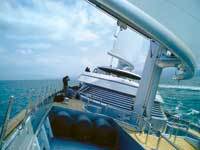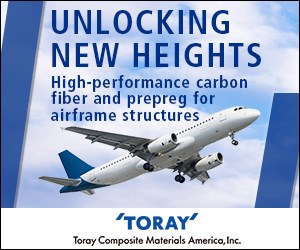CW Blog
JEC/SAMPE Europe Preview
In 2007, the JEC COMPOSITES Show and the SAMPE Europe Conference focus on the future in Paris.
Read MoreInnovation Driving Automotive SMC
New materials, methods and machinery are restoring sheet molding compound's preferred material status for automotive and heavy truck body panels.
Read MoreJEC COMPOSITES 2007 Exhibitor List
The following is based on the best information available from JEC on Jan. 29, 2007. "TBD"= to be determined. 3M France TBD A&P Technology TBD Aachen Composite Engineers TBD ABB France TBD Additek SaS Q16 Advanced Composites Group M14 AEC Polymers TBD Aero Consultants Ltd. AG N32 AGY K10
Read MoreEngineering Insights: All-Composite Hovercraft Rises to Performance Challenge
An exclusive look at a lightweight pultruded and resin-infused design that sets a new standard for amphibious craft.
Read MoreJeff Sloan's first editorial for Composites Technology
A lot of the "old guard"manufacturing processes in the U.S. (metal bending, metal machining, metal casting, etc.) grew up and prospered with the automotive industry, and it was on the coattails of these workhorses that the 20th Century American manufacturing boom rode to prominence.
Read MoreInside Manufacturing: A Reinforced Thermoplastic Car Hood?
Low-density GMT-cored sandwich construction and novel inductive mold-heating strategy are a viable option for horizontal body panels.
Read More'String binder' key to consistent preforms
A chopped glass preform is typically made by spraying chopped fiber and a liquid or powder binder onto a part-shaped screen. A vacuum is pulled to hold the fibers in place until heat or ultraviolet (UV) light melts or reacts the binder. These binder systems, however, require application streams and equipment separate
Read MoreMegayacht Composite Masts Get Smart
Freestanding square rigging is fully instrumented for structural health monitoring while under sail.
Read MoreCarbon/epoxy guitar: Competitive in quality and price
When former aerospace engineer and guitar aficionado Ellis Seal set out to design a composite acoustic guitar, he believed the inherent properties of carbon fiber could produce sound, playability, durability and consistency impossible in a wooden instrument.
Read MoreTesting Tech: Shear testing of sandwich panel core materials
In my previous column (HPC November 2006, p. 10), I noted that the shear strength and shear stiffness of the core material in a sandwich panel can be determined in situ while performing flexural tests to evaluate other sandwich panel properties. However, as was stated then, it is more accurate to measure these
Read MoreIn Situ Manufacturing: Pipe Relining in Demanding, Corrosive Environments
Onsite technology offers continuous manufacture and insertion of new high-performance pipe, without excavation and replacement.
Read More



